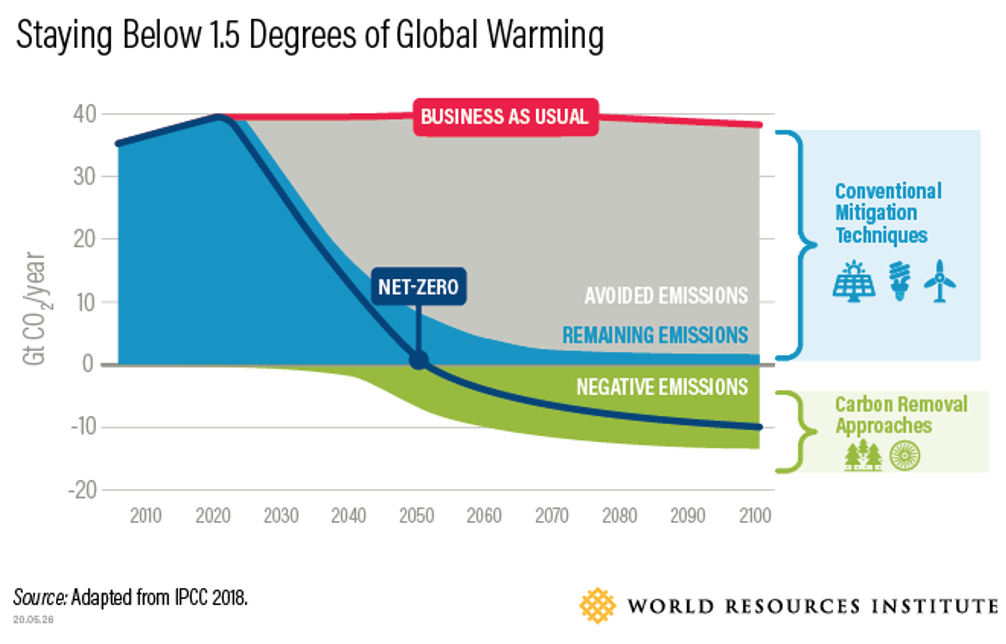The Problem
The oceans and climate
Over the last century, the ocean has absorbed nearly one-third of the excess carbon dioxide that humans have pumped into the atmosphere. It ends up dissolved into sea water, taken up by organisms, and passed through the marine ecosystem. Eventually some is locked away in the deep ocean.
But even with all the carbon the ocean removes from the atmosphere, our planet is on track to exceed a 1.5°C increase in average global temperature above pre-industrial levels within the next 20 years. According to the 2021 report from the Intergovernmental Panel on Climate Change, we need to do more than just cut our reliance on fossil fuels—we need to find new ways to remove, and safely store, more carbon than we add to the atmosphere each year, something known as “net negative emissions.”

The ocean, which covers more than 70% of our planet, may be able to help. In a few key parts of the ocean, biological activity is limited by a lack of iron in seawater. Adding iron could, therefore, help spur growth of phytoplankton and increase both the uptake of carbon dioxide by the ocean and the amount that gets sequestered at depth.
Science needs to lead the way, by providing the greatest possible insight into both the intended and unintended consequences, as well as the long-term effectiveness of adding iron to the ocean. The decisions we make today will shape the future of generations to come.
